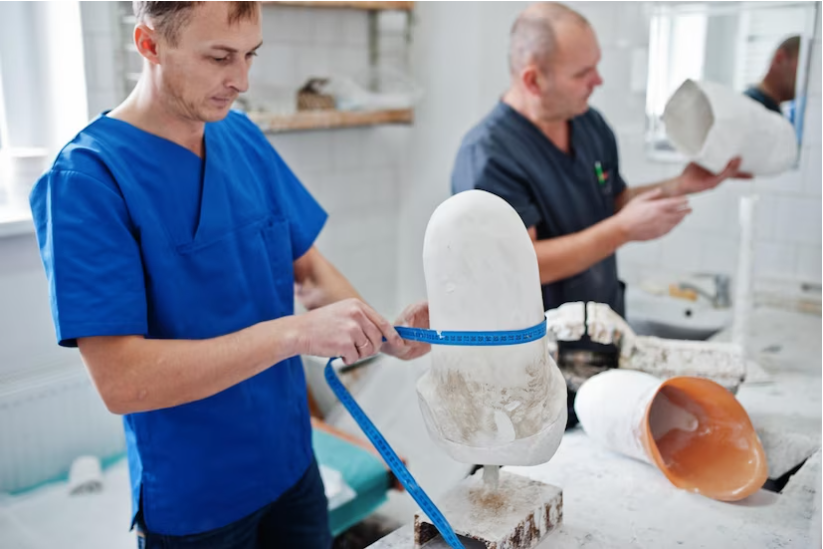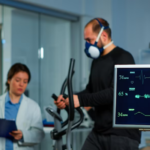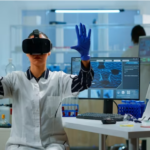
Do the same old exercises in physical therapy sessions bore you to tears? Are you trying to find a fresh strategy to improve your rehab experience? You only need to consider electro-medical devices! These tools have revolutionised physical therapy and rehabilitation by giving patients a novel technique to strengthen their muscles, lessen discomfort, and regain range of motion.
What exactly are electro-medical gadgets, though? Simply speaking, electro-medical devices are machinery that stimulates bodily muscles with electrical impulses. They are used to treat a range of ailments, including muscle weakness, pain, and spasticity, and come in several forms, like TENS, NMES, and FES. However, the employment of electro-medical equipment in physical therapy and rehabilitation is not a novel idea. In reality, Luigi Galvani’s discovery that electricity could cause frogs to contract their muscles in the 18th century laid the foundation for the development of sophisticated devices in this sector. Since then, electro-medical devices have developed and are now a crucial component of physical therapy and rehabilitation. So why do they matter so much? Find out by reading on!
Electro-Medical Device Types
Every type of electro-medical equipment utilised in physical therapy and rehabilitation has an own set of advantages. Low-level electrical impulses are used by TENS (Transcutaneous Electrical Nerve Stimulation) devices to prevent pain signals from reaching the brain and temporarily relieve chronic pain. By stimulating muscle contractions with electrical impulses, NMES (Neuromuscular Electrical Stimulation) devices assist weak or damaged muscles regain strength and enhance range of motion. Last but not least, FES (Functional Electrical Stimulation) devices help patients restore their capacity to do daily activities by activating muscles during functional movements like walking or reaching. Patients can benefit from enhanced muscle strength, less discomfort, and higher functionality by using these kinds of gadgets during rehabilitation and physical therapy, which will ultimately improve their quality of life.
Ailments Handled by Electro-Medical Devices
In physical therapy and rehabilitation, a variety of illnesses are treated with electro-medical devices. One such condition that can be treated using electro-medical devices is muscle weakness. Patients can regain strength and function in weak muscles by employing NMES devices to trigger muscular contractions. TENS devices, which seek to prevent pain impulses from reaching the brain, are also useful for treating pain. FES devices can also be used to treat spasticity, a disorder marked by rigidity of the muscles and uncontrollable muscle spasms. For instance, spinal cord injury patients who utilise FES to activate their leg muscles can stand and walk more easily. These are just a few instances of how electro-medical equipment can assist patients in recovery and physical therapy while treating a range of ailments.
Benefits of Electro-Medical Devices in Physical Therapy and Rehabilitation
Electro-medical equipment has many advantages in physical therapy and rehabilitation. To begin with, these tools can increase muscle power and range of motion, aiding patients in regaining use of weakened or damaged muscles. Additionally, they can lessen discomfort, offering a non-invasive option to conventional pain management techniques. Additionally, electro-medical equipment can improve the efficacy of several sorts of therapies, including manual therapy and exercise. Patients can achieve better results and make more rapid progress in their rehabilitation process by employing electro-medical devices to stimulate muscle contractions during exercise or to target particular muscles during manual therapy. Overall, electro-medical equipment is a useful instrument in physical therapy and rehabilitation, giving patients a special approach to enhance their physical function and quality of life.
Use of Electro-Medical Devices: Challenges
Although electro-medical equipment can be a useful tool in physical therapy and rehabilitation, there are a number of difficulties that therapists may encounter. Patient compliance can be difficult because some patients may find the feeling of electrical stimulation to be unpleasant or uncomfortable. The right equipment selection and ensuring that the practitioner and the patient receive the required training can also be challenges. However, by carefully choosing the best equipment for each patient’s unique needs, ensuring that the physician and patient have received the required training and education, and attending to any worries or discomforts the patient may be experiencing, doctors can overcome these difficulties. Electro-medical devices can be safely and successfully implemented into a patient’s rehabilitation plan with the right care and attention.
Future of Electro-Medical Devices in Physical Therapy and Rehabilitation
With new technology and developments in physical therapy and rehabilitation, the future of electro-medical devices is promising. The adoption of wireless and mobile technologies, which will increase patient mobility and flexibility during therapy sessions, is one area of expansion. Additionally, improvements in electroceuticals, which target certain nerves or organs with electrical stimulation, have the potential to completely alter the way pain is managed. Electro-medical devices are likely to be used considerably more frequently and more successfully in physical therapy and rehabilitation as these technologies advance. Electro-medical devices have the potential to enhance patient outcomes and quality of life, so the future is generally promising.
Conclusion
In conclusion, physical therapy and rehabilitation in the USA rely heavily on electro-medical technologies. They provide a secure, painless, and efficient way to treat a variety of ailments, such as muscle weakness, discomfort, and spasticity. Patients can have stronger muscles, less discomfort, and a wider range of motion by using these devices. While using electro-medical devices has its difficulties, such as patient compliance, equipment selection, and training, they can be solved with the right care and consideration.
Electro-medical devices have a promising future in physical therapy and rehabilitation because to new technologies that are just around the corner. The usage of electro-medical devices is projected to increase in popularity and efficacy as wireless and mobile technology becomes more pervasive and electroceuticals develop.
Given the significance of electro-medical technology, it is imperative to promote additional research and development in this field. We can ensure that more patients profit from the usage of electro-medical devices in their rehabilitation and physical therapy journeys by continuing to advance the technology and improving our knowledge of its potential uses.
Read More You May Like:
- Electroconvulsive Therapy (ECT): A Guide to the Controversial Treatment for Mental Illness
- Electroencephalography (EEG): The Brain-Monitoring Technology and Its Applications
- Electrostimulation Therapy: Improving Muscle Strength and Function for Patients
- Electrotherapy for Pain Relief: A Comprehensive Guide
- Understanding TENS Therapy: How It Works and Who Can Benefit








